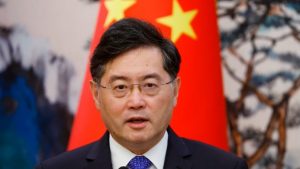China has powered up
its first domestically built nuclear reactor, the Hualong One, which marks a significant
step as Beijing strives to move towards independence from Western allies for
energy security and critical technology, AFP reported.
The reactor, stationed
at a plant in east China’s Fujian province, was connected to the national grid
on Friday. It has the capacity to generate 10 billion kilowatt-hours of
electricity each year and cut carbon emissions by 8.16 million tons, according
to China National Nuclear Corporation (CNNC).
“This marks China
breaking the monopoly of foreign nuclear power technology and officially
entering the technology’s first batch of advanced countries,” CNNC said in
a statement.
Also Read | Iran would hail US return to nuclear deal – with ‘guarantees’
Nuclear plants contributed
less than 5% to China’s annual electricity needs in 2019, according to the
National Energy Administration, but this number is expected to rise as Beijing works
its way towards carbon neutrality by 2060.
Reducing its
dependence on Western allies in critical high-tech sectors such as power
generation is a key goal in Beijing’s “Made in China 2025” plan.
Pushing the pedal to
the metal, billions of dollars in state subsidies have been given to Chinese
companies. This move has sparked a protracted trade row with Washington.
Development of the
Hualong One reactor began in 2015, and currently, there are six more reactors
under construction at home and abroad, state-owned plant operator CNNC said. The
Hualong One will be put to commercial use by the end of the year after undergoing
tests.
China has 47 nuclear
plants with a total generation capacity of 48.75 million kilowatts — the
world’s third highest after the United States and France.
Beijing has financed
billions of dollars in the nuclear energy sector in recent years as it
struggles to reduce its dependence on coal. Thirteen nuclear plants are under
construction, more than in any other country, despite environmental and safety
concerns.






